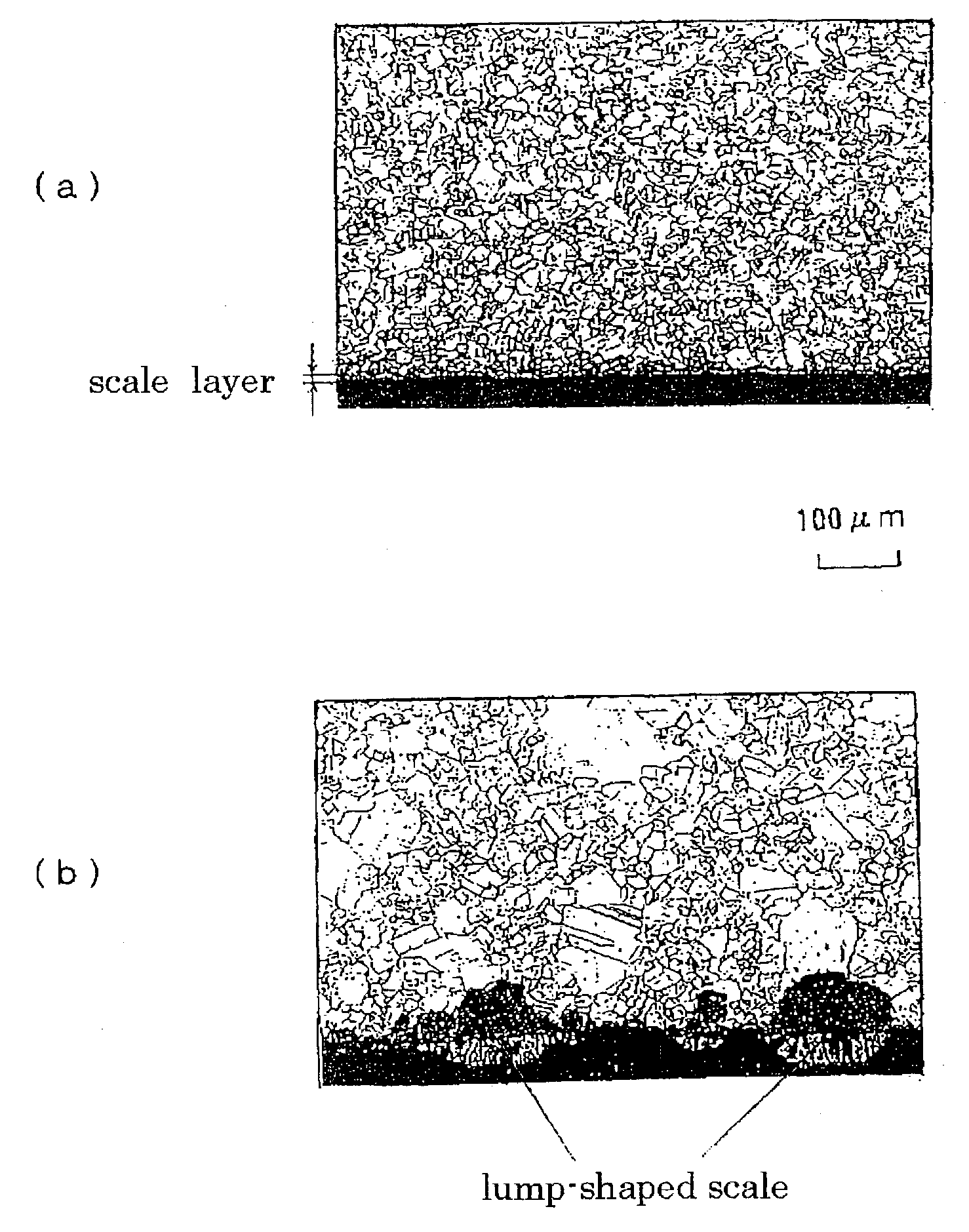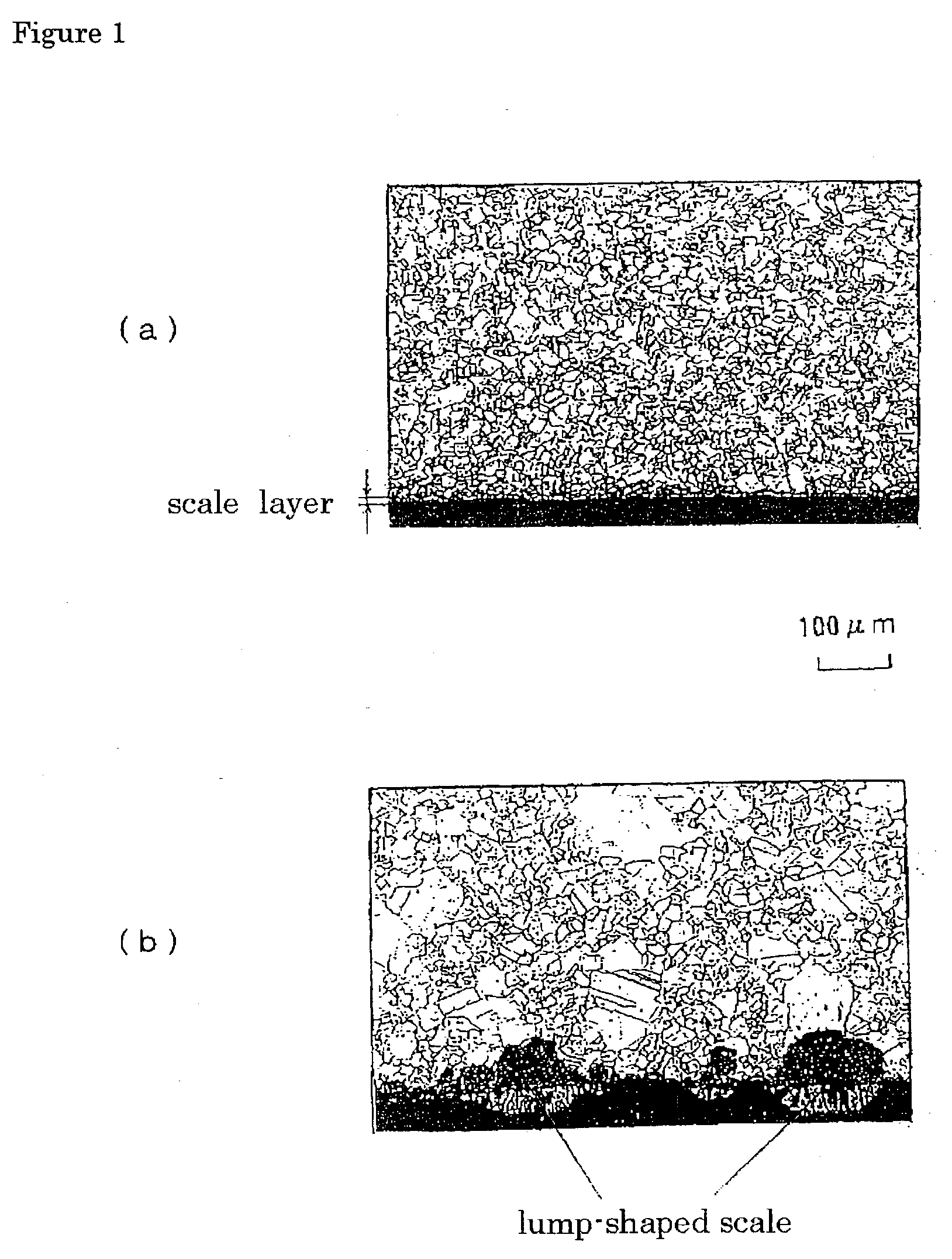Austenitic stainless steel tube excellent in steam oxidation resistance and a manufacturing method thereof
a technology of stainless steel and manufacturing method, which is applied in the direction of manufacturing tools, furnaces, heat treatment equipment, etc., can solve the problems of reducing the effective weldability and workability, and affecting the quality of the finished produ
- Summary
- Abstract
- Description
- Claims
- Application Information
AI Technical Summary
Benefits of technology
Problems solved by technology
Method used
Image
Examples
example 1
(Example 1)
[0091] Twenty kinds of steels, having chemical compositions shown in Table 1, were melted. The steels of Nos. 1 to 13 and Nos. 17 to 20 were melted by use of a vacuum melting furnace of a volume of 50 kg, and the obtained ingots were finished to steel plates by the following Manufacturing Method A. The working conditions correspond to the manufacturing conditions of a steel tube by the first method. Further, the steels of Nos. 14 to 16 were melted by use of a vacuum melting furnace of a volume of 150 kg, and forged billets from ingots were finished to steel tubes by the following Manufacturing Method B.
[0092] (1) Manufacturing Method A (Corresponding to Second Method)
[0093] Step 1: Heating at 1220.degree. C.;
[0094] Step 2: Forming to a steel plate having a thickness of 15 mm by hot forging;
[0095] Step 3: Cooling at a rate of 0.55.degree. C. / sec from 800.degree. C. to 500.degree. C. or less;
[0096] Step 4: Forming to a steel plate having a thickness of 12 mm by grinding the...
example 2
(Example 2)
[0116] A steel plate of steel No. 2 shown in Table 1 is formed having a thickness of 15 mm by hot forging, and was subjected to the preliminary solution treatment, the cold working, and the final solution treatment in the various conditions shown in Table 3.
[0117] With the obtained steel plate, the austenitic grain size and mixed grain ratios were examined as in Example 1, and re-solution treatment. whose conditions are the same in Example 1. was performed. The austenitic grain size and mixed grain ratio were examined, and then, the steel plate was subjected to steam oxidation test, with the same testing conditions as in Example 1, and the steam oxidation resistance was examined. The result was also shown in Table 3.
[0118] Further, their austenitic grain size, mixed grain ratios and steam oxidation scale thicknesses were examined by the same methods as in Example 1. Further, the first sample of the steel No. 2 in Table 3 is the same as the steel No. 2 in Table 2.
3TABLE 3 ...
PUM
| Property | Measurement | Unit |
|---|---|---|
| Temperature | aaaaa | aaaaa |
| Temperature | aaaaa | aaaaa |
| Temperature | aaaaa | aaaaa |
Abstract
Description
Claims
Application Information
 Login to View More
Login to View More - R&D
- Intellectual Property
- Life Sciences
- Materials
- Tech Scout
- Unparalleled Data Quality
- Higher Quality Content
- 60% Fewer Hallucinations
Browse by: Latest US Patents, China's latest patents, Technical Efficacy Thesaurus, Application Domain, Technology Topic, Popular Technical Reports.
© 2025 PatSnap. All rights reserved.Legal|Privacy policy|Modern Slavery Act Transparency Statement|Sitemap|About US| Contact US: help@patsnap.com


